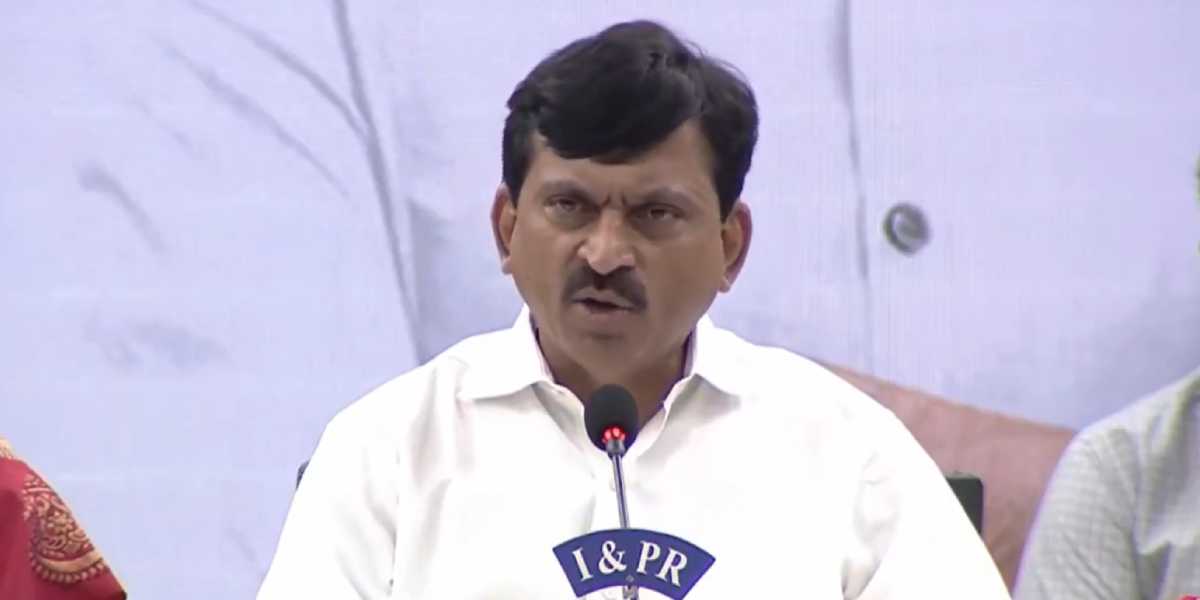The Cabinet's decision will result in amendments to both the Telangana Panchayat Raj Act 2018 and the Telangana Municipalities and Municipal Corporations Act, removing disqualification clauses for both rural and urban local bodies.
Published Oct 24, 2025 | 10:44 PM ⚊ Updated Oct 24, 2025 | 10:44 PM

Ponguleti Srinivasa Reddy, Minister of Information and Public Relations of Telangana.
Synopsis: The Telangana Cabinet formally approved the removal of the “two-child norm” under Section 21(3) of the Telangana Panchayat Raj Act, 2018. The decision follows a sharp decline in Telangana’s birth registration, which stood out even in a nation undergoing demographic transition.
On 23 October, the Telangana Cabinet, chaired by Chief Minister A Revanth Reddy, formally approved the removal of the “two-child norm” under Section 21(3) of the Telangana Panchayat Raj Act, 2018.
The rule, which disqualified individuals with more than two children from contesting rural local-body elections, will be deleted through an ordinance since the Assembly is prorogued, subject to the Governor’s approval.
It marks the end of a policy that began in 1994 — a full 31 years ago — when the erstwhile unified Andhra Pradesh government introduced it as a population-control measure. After Telangana’s formation, the restriction was retained in the 2018 Panchayat Raj Act, continuing to apply to rural local-body posts, including sarpanch, Mandal Parishad Territorial Constituency (MPTC), and Zilla Parishad Territorial Constituency (ZPTC) members.
Those who breached the rule faced disqualification, even after the election, to uphold what officials called the “family-planning ethos.”
However, while the policy persisted, something dramatic was happening in Telangana’s birth registration data — a decline so sharp it stood out even in a nation undergoing demographic transition.
In 2019, Telangana registered 8,41,268 births. That same year, the previous BRS government withdrew the two-child norm for urban municipal elections, though it remained in force for rural areas.
What followed was a collapse in registrations. By 2020, the number dropped to 6,69,320 — a fall of 1,71,948 births, or 20.4 percent. In 2021, it fell further to 611,651, marking a 27.3 percent decline from the 2019 baseline. A brief recovery in 2022 brought registrations to 7,03,362, but by 2023, they had slipped again to 652,688.
Over four years, Telangana saw a drop of 1,88,580 registered births — a 22.4 percent decline from 2019 levels, according to the latest Vital Statistics of India report based on the Civil Registration System 2023..
To understand how unusual this is, consider the national picture. Between 2019 and 2023, India’s total registered births actually increased from 24.82 million to 25.21 million — a gain of 1.6 percent. While the nation recovered from pandemic-era disruptions, Telangana continued to slide.
Telangana’s decline places it among the worst-performing states in the country. Only Assam, with a 21.3 percent drop, comes close. Kerala, another urbanised southern state, saw an 18.1 percent decline. However, most other major states either recovered or experienced growth.
Bihar’s registrations increased 4.6 percent over the same period. Madhya Pradesh surged 24.1 percent. Rajasthan grew 7.6 percent. Even Maharashtra, hit hard by the pandemic, recovered to post a 3.3 percent gain by 2023.
Perhaps most telling is the comparison with Andhra Pradesh. The two states share cultural and demographic similarities, having been part of a unified state until 2014. Both retained the two-child norm after bifurcation. Yet Andhra Pradesh, which officials noted has already repealed similar restrictions, saw its birth registrations rise 0.9 percent between 2019 and 2023, moving from 7,54,939 to 7,62,093. Telangana, meanwhile, plummeted.
By 2023, Telangana’s share of India’s total registered births had fallen to 2.59 percent, down from 3.39 percent in 2019.
The Cabinet’s decision to abolish the restriction entirely for both rural and urban bodies comes with explicit reasoning. Officials called the norm “outdated and impractical,” noting that population stabilisation has already been achieved. The move widens eligibility and, crucially, aligns Telangana with other states like Andhra Pradesh.
However, there’s another factor driving the urgency: the upcoming panchayat polls and the expansion of reservations for Backwards Classes, which necessitates a significantly larger candidate pool. More significantly, the government considered national demographic trends. Many states that achieved population stabilisation, now risk losing representation and central funding once the delimitation freeze ends in 2026.
Since 1971, parliamentary seats have been frozen based on the 1971 census, protecting states that successfully controlled their populations from losing representation. But that protection expires in 2026.
After that, seats will be redistributed based on current population — meaning southern states with lower birth rates could lose seats to northern states with higher fertility.
It’s a paradox: States that succeeded in population control now face political penalties for that success.
The Cabinet’s decision will result in amendments to both the Telangana Panchayat Raj Act 2018 and the Telangana Municipalities and Municipal Corporations Act, removing disqualification clauses for both rural and urban local bodies.
The choice to proceed through an Ordinance, rather than waiting for the Assembly to reconvene, signals the government’s sense of urgency. Ordinances take effect immediately upon the Governor’s approval, though they must be replaced by legislation when the Assembly next meets, typically within six weeks of a session.
For families across Telangana’s rural districts, the practical impact is immediate: individuals with more than two children will no longer be barred from contesting sarpanch, MPTC, or ZPTC positions. The political stigma attached to larger families in rural governance will dissolve.
(Edited by Muhammed Fazil.)
